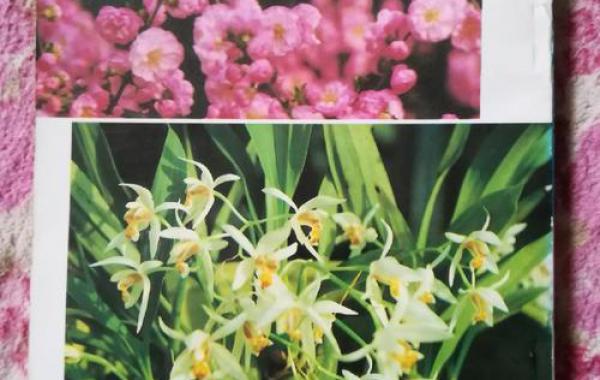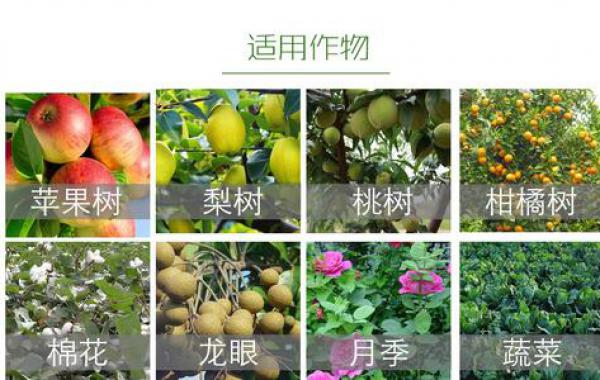What are the biological pesticides for the control of flower diseases and insect pests?

What are the biological pesticides for the control of flower diseases and insect pests.
Introduction of biological pesticides for the control of flower diseases and insect pests:
Biopesticide generally refers to the use of living organisms to control diseases and insect pests, which has the characteristics of no residue, no pollution and no pollution to the environment, and can act exclusively on related diseases and pests. At present, it is recognized that bacteria, antibiotics, insect hormones, entomopathogenic nematodes and insect viruses are widely used at home and abroad.
The control of flower leaf-eating pests is an insect growth regulator. For example, diflubenzuron series insecticides are insect growth regulators, and their insecticidal mechanism is to inhibit chitin synthesis in insect epidermis. Juvenile ureas are mainly stomach poisons, but they can also invade the insect epidermis with good control effect, long effective period, low control cost, resistance to Rain Water, drug resistance to pests and safe to flower plants, human, livestock and environment. The second is bacterial pesticide Bt emulsion. Bt emulsion is a kind of Bacillus insecticide. The main insecticidal ingredient is hemisporal crystal. The drug has become the main biological insecticide widely used. The pathogenic mechanism of Bt emulsion is that Bt insecticidal toxin causes pathological changes in the digestive tract of pests and dies. After eating the leaves with Bt emulsion, the leaf-eating pests caused paralysis, fasting, slow response, diarrhea, and then a black ring appeared in the abdomen, which gradually expanded to the whole body, and eventually died of poisoning. After death, pests become black software, rot, hang upside down, or die on leaves and branches. Bt has pathogenic and toxic effects on many kinds of Lepidoptera larvae and leafhoppers, such as heart borer, yellow thorn moth, geometrid, etc., mainly used to control larvae of Lepidoptera pests. Third, botanical pesticides, mainly including the following four kinds. 1% nicotine oil: multiple Chinese herbal medicine plant EC insecticides, which can also be quickly killed against resistant insects, with the characteristics of good degradation, no residue, safe use, no pollution, no pollution and stimulating the growth of flowers. 0.6% matrine lactone water agent: the action mechanism is mainly contact killing, supplemented by stomach poison, which can promote the growth of flowers and can be used to control all kinds of flower aphids and leaf-eating pests. 1.2% nicotine EC: it is a botanical pesticide, and the active ingredients are nicotine and matrine, which have stomach toxicity, contact killing and fumigation effects on insects. It has low toxicity to human beings and animals, no pollution to the environment, and no drug harm to flowers. 0.5% azadirachtin EC: a botanical pesticide.
The drug has the advantages of high efficiency, safety, low toxicity, low residue and no drug damage to flowers. At the same time, it has stomach poison, contact killing and certain antifeeding effect.
Control of flower piercing and sucking pests
First, fungal pesticides, mainly killing aphids. Killing aphids is a kind of fungal biological pesticide, the main insecticidal ingredient is an ester-soluble sterol compound, which has low toxicity, knocks down aphids quickly, kills leaf mites, does not harm lacewings, ladybugs and other beneficial insects, and has the effect of promoting the growth of flowers. The second is a series of antibiotic pesticides, there are mainly the following three kinds. The active ingredient of this medicine is avermectin, which is widely used at present. It can effectively control a large number of phytophagous mites and other pests that are insensitive to or resistant to common pesticides, such as red spiders, leaf moths, diamondback moths, inchworm, poisonous moths, wood lice and other leaf-eating and piercing flower pests. It has stomach toxicity and contact killing effect on mites and other pests. Compared with chemical pesticides, predatory and parasitic beneficial insects rise faster after using this drug, which is beneficial to ecological balance. The drug is easy to decompose in the presence of oxygen and light, and has no residue, which is beneficial to human, animal and flower plants. 10% Liuyangmycin water agent: an acaricidal agent, which is a new type of antibiotics. 2.5% Huaguangmycin powder: a new type of antibiotic acaricidal agent, which does not cause pollution to the environment, has no residue in the air and soil, and has a protective effect on beneficial insects. Third, botanical pesticides, such as 0.5% veratrinol, have the best effect on all kinds of aphids, especially aphids that are prone to resistance, and also have a certain effect on leaf mites.
Biopesticide generally refers to the use of living organisms to control diseases and insect pests, which has the characteristics of no residue, no pollution and no pollution to the environment, and can act exclusively on related diseases and pests. At present, it is recognized that bacteria, antibiotics, insect hormones, entomopathogenic nematodes and insect viruses are widely used at home and abroad.
Control of flower leaf-eating pests
One is insect growth regulator. For example, diflubenzuron series insecticides are insect growth regulators, and their insecticidal mechanism is to inhibit chitin synthesis in insect epidermis. Juvenile ureas are mainly stomach poisons, but they can also invade the insect epidermis with good control effect, long effective period, low control cost, resistance to Rain Water, drug resistance to pests and safe to flower plants, human, livestock and environment. The second is bacterial pesticide Bt emulsion. Bt emulsion is a kind of Bacillus insecticide. The main insecticidal ingredient is hemisporal crystal. The drug has become the main biological insecticide widely used. The pathogenic mechanism of Bt emulsion is that Bt insecticidal toxin causes pathological changes in the digestive tract of pests and dies. After eating the leaves with Bt emulsion, the leaf-eating pests caused paralysis, fasting, slow response, diarrhea, and then a black ring appeared in the abdomen, which gradually expanded to the whole body, and eventually died of poisoning. After death, pests become black software, rot, hang upside down, or die on leaves and branches. Bt has pathogenic and toxic effects on many kinds of Lepidoptera larvae and leafhoppers, such as heart borer, yellow thorn moth, geometrid, etc., mainly used to control larvae of Lepidoptera pests. Third, botanical pesticides, mainly including the following four kinds. 1% nicotine oil: multiple Chinese herbal medicine plant EC insecticides, which can also be quickly killed against resistant insects, with the characteristics of good degradation, no residue, safe use, no pollution, no pollution and stimulating the growth of flowers. 0.6% matrine lactone water agent: the action mechanism is mainly contact killing, supplemented by stomach poison, which can promote the growth of flowers and can be used to control all kinds of flower aphids and leaf-eating pests. 1.2% nicotine EC: it is a botanical pesticide, and the active ingredients are nicotine and matrine, which have stomach toxicity, contact killing and fumigation effects on insects. It has low toxicity to human beings and animals, no pollution to the environment, and no drug harm to flowers. 0.5% azadirachtin EC: a botanical pesticide. The drug has the advantages of high efficiency, safety, low toxicity, low residue and no drug damage to flowers. At the same time, it has stomach poison, contact killing and certain antifeeding effect.
Control of flower piercing and sucking pests
First, fungal pesticides, mainly killing aphids. Killing aphids is a kind of fungal biological pesticide, the main insecticidal ingredient is an ester-soluble sterol compound, which has low toxicity, knocks down aphids quickly, kills leaf mites, does not harm lacewings, ladybugs and other beneficial insects, and has the effect of promoting the growth of flowers. The second is a series of antibiotic pesticides, there are mainly the following three kinds. The active ingredient of this medicine is avermectin, which is widely used at present. It can effectively control a large number of phytophagous mites and other pests that are insensitive to or resistant to common pesticides, such as red spiders, leaf moths, diamondback moths, inchworm, poisonous moths, wood lice and other leaf-eating and piercing flower pests. It has stomach toxicity and contact killing effect on mites and other pests. Compared with chemical pesticides, predatory and parasitic beneficial insects rise faster after using this drug, which is beneficial to ecological balance. The drug is easy to decompose in the presence of oxygen and light, and has no residue, which is beneficial to human, animal and flower plants. 10% Liuyangmycin water agent: an acaricidal agent, which is a new type of antibiotics. 2.5% Huaguangmycin powder: a new type of antibiotic acaricidal agent, which does not cause pollution to the environment, has no residue in the air and soil, and has a protective effect on beneficial insects. Third, botanical pesticides, such as 0.5% veratrinol, have the best effect on all kinds of aphids, especially aphids that are prone to resistance, and also have a certain effect on leaf mites.
Related
- What if the leaves of potted flowers turn yellow?
- Florescence Control of several Flowers
- Anti-freezing technology and post-freezing nursing technology of flowers
- What is the classification of flowers? What are the common methods of flower classification?
- Prevention and control of alkali and acid damage of flowers in courtyard
- Technology of Anti-freezing and restoring growth of Flower seedlings in greenhouse and greenhouse
- How does flower fertilization not hurt the root? Fertilization technology of flowers
- Key points of disinfection in flower greenhouse
- Several pesticides that are banned or used cautiously in flowers
- How to fertilize the flowers that watch the leaves?



